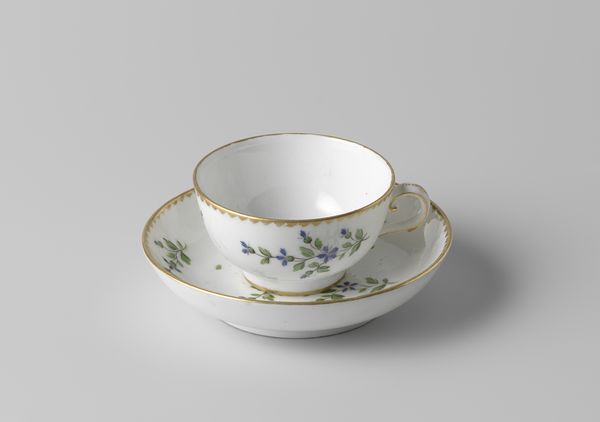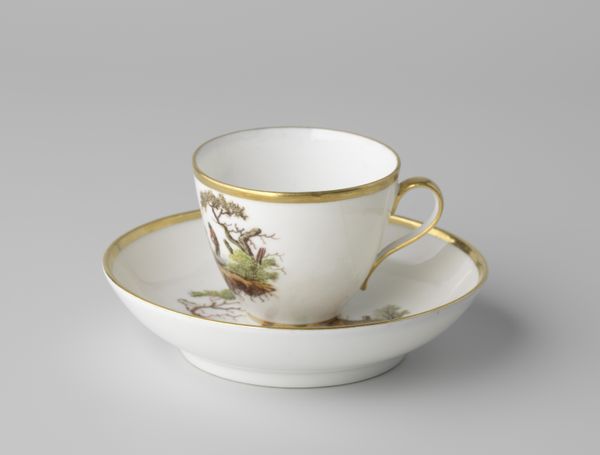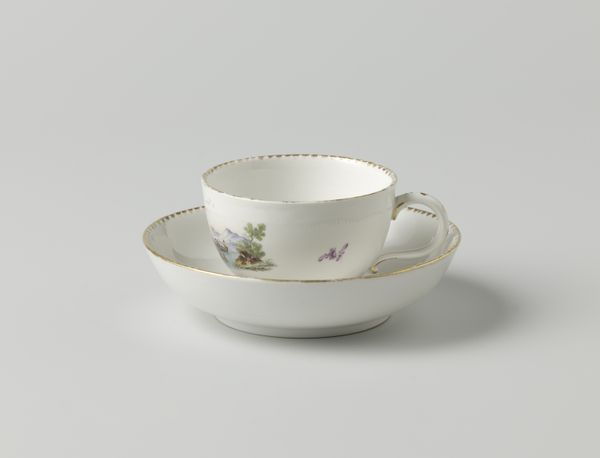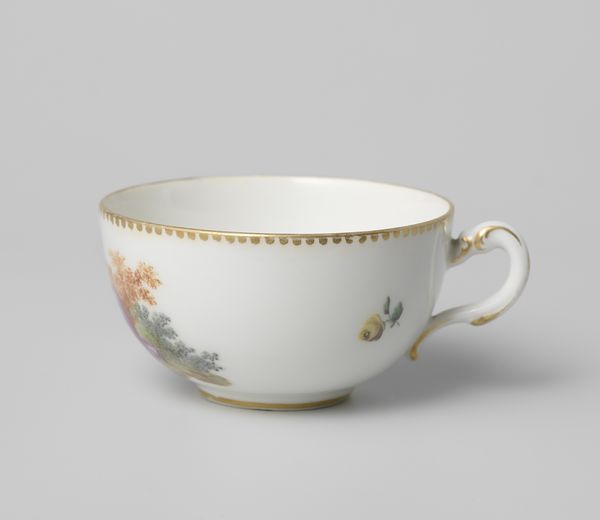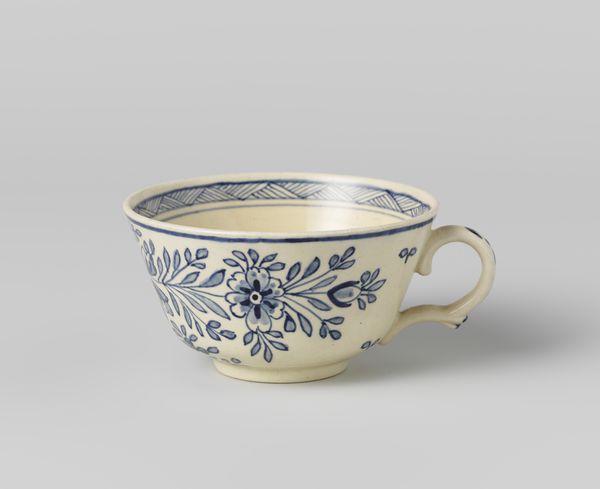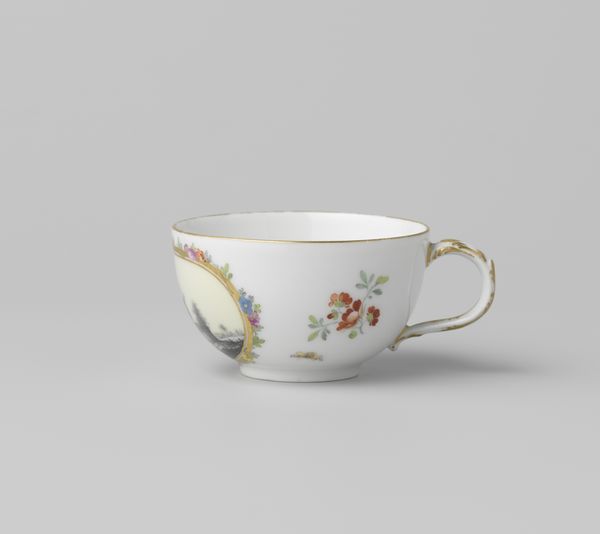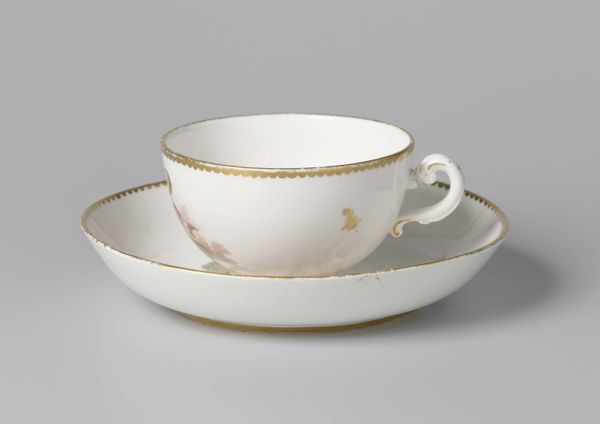
Dimensions: height 4.7 cm, diameter 8.4 cm, diameter 4.4 cm, width 10.2 cm
Copyright: Rijks Museum: Open Domain
Curator: Before us is a "Cup with Flower Sprays," crafted around 1790 by the fabriek Leperre-Durot. It's a delicate example of earthenware, showcasing a beautiful decorative-art Rococo style. Editor: My first impression is one of understated elegance. It feels light and airy, a real celebration of simple beauty. The floral detailing seems so delicate. Curator: Rococo was a very interesting moment. Originating in the decorative arts, it was quickly adopted as a major movement, impacting painting, sculpture, architecture and across Europe. As these factories like Leperre-Durot developed to produce luxury items, Rococo-inspired design was there from the start. Editor: Absolutely, and consider the materials: relatively humble earthenware elevated by skillful artistry. We often forget the intense labor involved in even seemingly simple pieces like this. Think of the potters, painters, and those managing the kiln firings – it speaks to a whole chain of production. Curator: Indeed. This wasn't just about personal consumption; it was part of a larger system. Porcelain production, and earthenware like this, represented not just refinement but also the wealth and influence of certain European powers. To own it was a signifier of social status, emulating royal trends. Editor: And those little flowers aren’t just decoration. They had symbolic meaning – perhaps a longing for the idyllic and rural, a counterpoint to the often harsh realities of 18th-century life. Curator: Exactly! They also underscore the complicated relationship between production and consumption in society at the time. Editor: Looking closer, you notice the slight irregularities in the hand-painted design – a beautiful testament to its handmade nature. The perfect imperfection reveals something very human about the cup and saucer. Curator: It's also important to reflect on how the preservation of an object like this changes our relationship with it. It's moved out of everyday use and into a protected space. Editor: So true! A little cup, yet it tells such a complex story of material culture, labor, and social ambition. Curator: It is an eloquent artifact and provides much insight into late 18th century life, the economics of production, and the evolution of artistic expression.
Comments
No comments
Be the first to comment and join the conversation on the ultimate creative platform.
